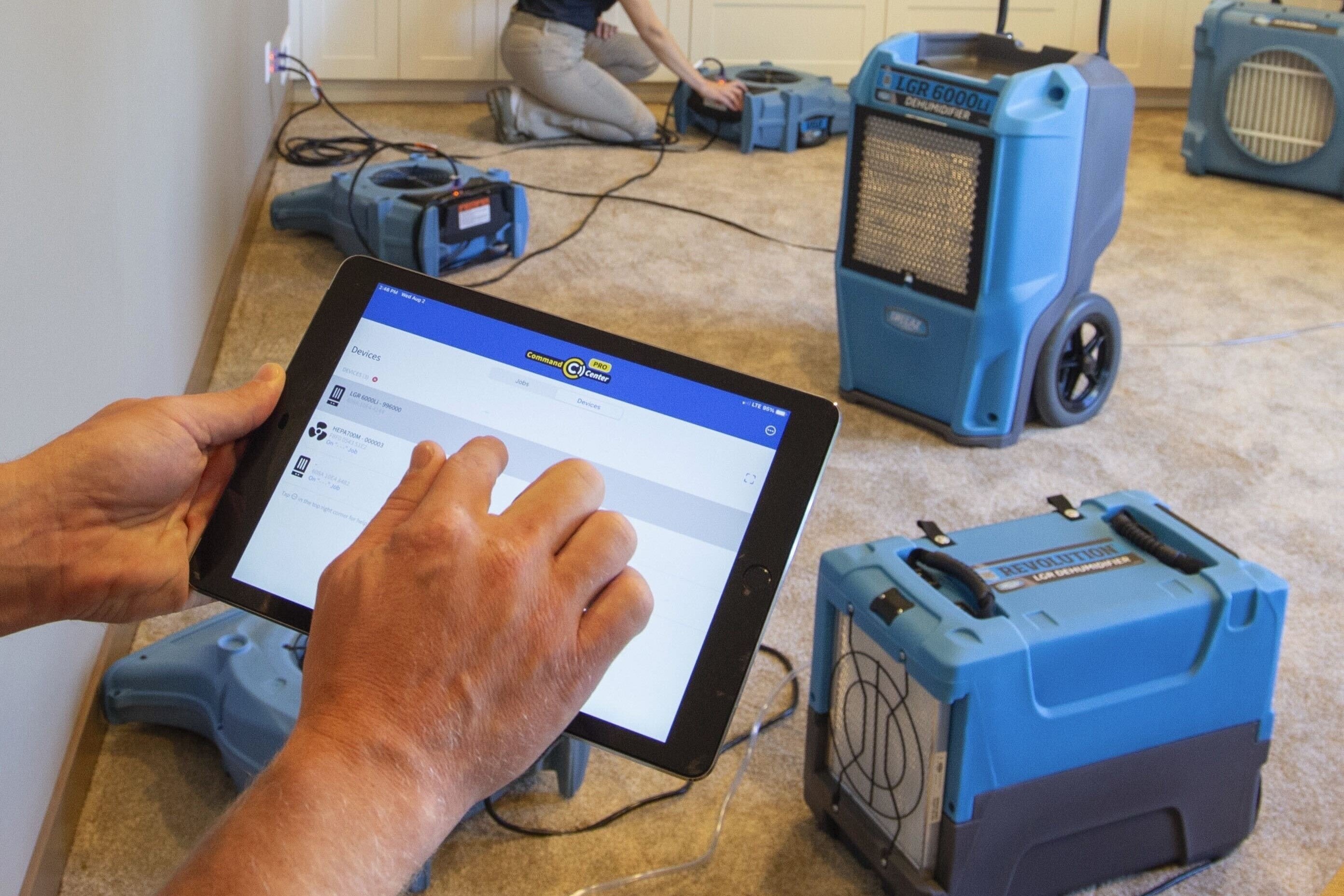By Pat Muller, Ready 2 Respond Trainer
Equipment placement can make or break the water damage recovery process. While using enough dehumidification is essential, proper dehumidifier placement is equally important.
Consider these scenarios:
- Positioning dehumidifiers against the wall of a large space – like a gymnasium or conference space – to avoid foot traffic may seem practical, but it restricts dehumidification and drying effectiveness in sections of the room.
- Placing dehumidifiers only in a central hallway in a multi-room facility, such as an office building, fails to address moisture trapped behind doors and partitions.
Strategic placement is key to ensuring thorough and efficient drying. Start by placing dehumidifiers first then adding airmovers throughout the space to lift moisture into the air for dehumidifiers to remove.
Here are a few tips for optimal dehumidifier placement:
- Set Moisture “Capture Zones” – In structures with doorways, alcoves, or other barriers, set up multiple “capture zones” using dehumidifier and airmover sets to ensure even drying and reduce the likelihood of secondary damage.
- Consider Spacing – When using several sets of equipment, space them evenly throughout the structure. The more moisture capture zones there are, the more effective drying will be.
- Strategize Airflow – Position each dehumidifier near an airmover’s outlet to help distribute dehumidified air effectively, but avoid directing airflow straight into the dehumidifier’s intake, which can disrupt performance. Also, do not blow warm, dry air from dehumidifier outlets directly on finished, hard surfaces – this can cause damage from over-drying.
Regularly evaluating humidity levels using moisture meters ensures effective drying throughout a structure. In complex, multi-room spaces, use meters to locate hidden damp spots behind walls and furniture or in corners. For large, open areas like gymnasiums, check levels throughout the area and make certain enough equipment is deployed to circulate air and prevent moisture from accumulating in overlooked spots.
Consistently monitor moisture levels across the drying environment and adjust dehumidifier placement as needed to achieve the required dry standard.
Contact the R2R team for help with team training on water damage protocols. For more drying tips, follow us on LinkedIn and subscribe to our Facility Insights newsletter.

Team Training: Essential Skills for Water Damage Response
Frequent Water Damages: The Hidden Costs to Your Facility